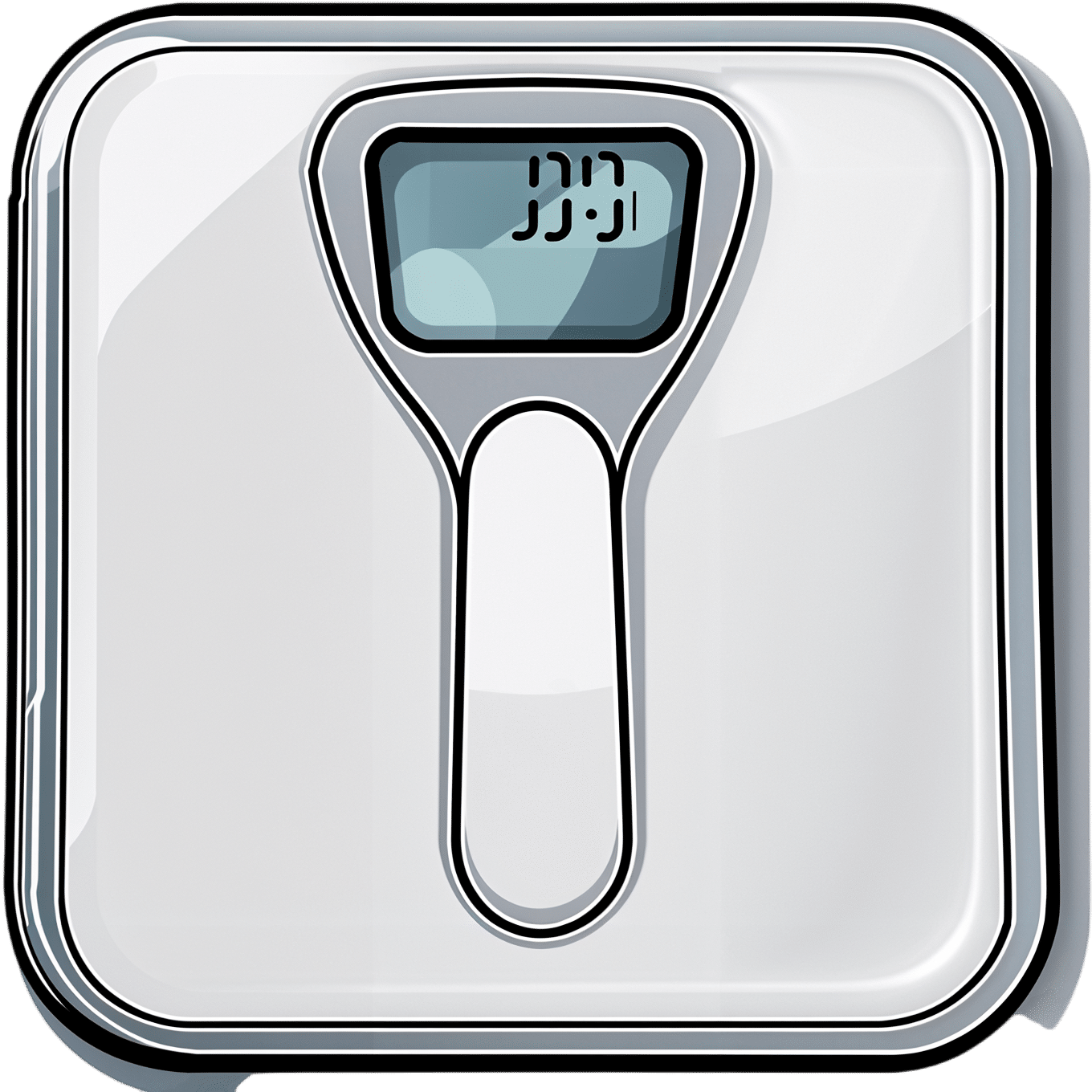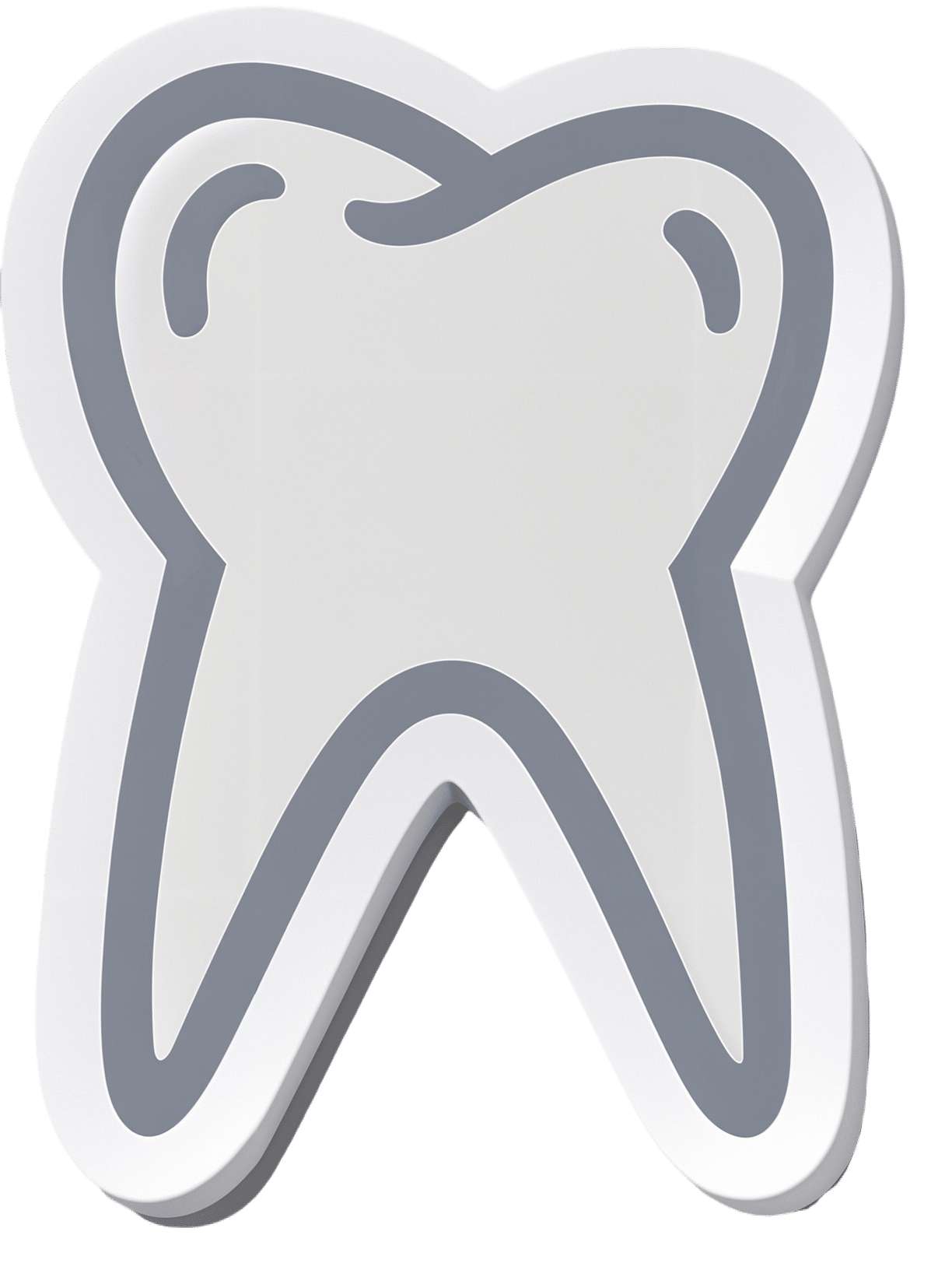
Lose Weight (Healthily!)
10almonds is reader-supported. We may, at no cost to you, receive a portion of sales if you purchase a product through a link in this article.
What Do You Have To Lose?
For something that’s a very commonly sought-after thing, we’ve not yet done a main feature specifically about how to lose weight, so we’re going to do that today, and make it part of a three-part series about changing one’s weight:
- Losing weight (specifically, losing fat)
- Gaining weight (specifically, gaining muscle)
- Gaining weight (specifically, gaining fat)
And yes, that last one is something that some people want/need to do (healthily!), and want/need help with that.
There will be, however, no need for a “losing muscle” article, because (even though sometimes a person might have some reason to want to do this), it’s really just a case of “those things we said for gaining muscle? Don’t do those and the muscle will atrophy naturally”.
One reason we’ve not covered this before is because the association between weight loss and good health is not nearly so strong as the weight loss industry would have you believe:
And, while BMI is not a useful measure of health in general, it’s worth noting that over the age of 65, a BMI of 27 (which is in the high end of “overweight”, without being obese) is associated with the lowest all-cause mortality:
BMI and all-cause mortality in older adults: a meta-analysis
Important: the above does mean that for very many of our readers, weight loss would not actually be healthy.
Today’s article is intended as a guide only for those who are sure that weight loss is the correct path forward. If in doubt, please talk to your doctor.
With that in mind…
Start in the kitchen
You will not be able to exercise well if your body is malnourished.
Counterintuitively, malnourishment and obesity often go hand-in-hand, partly for this reason.
Important: it’s not the calories in your food; it’s the food in your calories
See also: Mythbusting Calories
The kind of diet that most readily produces unhealthy overweight, the diet that nutritional scientists often call the “Standard American Diet”, or “SAD” for short, is high on calories but low on nutrients.
So you will want to flip this, and focus on enjoying nutrient-dense whole foods.
The Mediterranean Diet is the current “gold standard” in this regard, so for your interest we offer:
Four Ways To Upgrade The Mediterranean Diet
And since you may be wondering:
Should You Go Light Or Heavy On Carbs?
The dining room is the next most important place
Many people do not appreciate food enough for good health. The trick here is, having prepared a nice meal, to actually take the time to enjoy it.
It can be tempting when hungry (or just plain busy) to want to wolf down dinner in 47 seconds, but that is the metabolic equivalent of “oh no, our campfire needs more fuel, let’s spray it with a gallon of gasoline”.
To counter this, here’s the very good advice of Dr. Rupy Aujla, “The Kitchen Doctor”:
Interoception & Mindful Eating
The bedroom is important too
You snooze, you lose… Visceral belly fat, anyway! We’ve talked before about how waist circumference is a better indicator of metabolic health than BMI, and in our article about trimming that down, we covered how good sleep is critical for one’s waistline:
Visceral Belly Fat & How To Lose It
Exercise, yes! But in one important way.
There are various types of exercise that are good for various kinds of health, but there’s only one type of exercise that is good for boosting one’s metabolism.
Whereas most kinds of exercise will raise one’s metabolism while exercising, and then lower it afterwards (to below its previous metabolic base rate!) to compensate, high-intensity interval training (HIIT) will raise your metabolism while training, and for two hours afterwards:
…which means that unlike most kinds of exercise, HIIT actually works for fat loss:
So if you’d like to take up HIIT, here’s how:
How (And Why) To Do HIIT (Without Wrecking Your Body)
Want more?
Check out our previous article about specifically how to…
Burn! How To Boost Your Metabolism
Take care!
Don’t Forget…
Did you arrive here from our newsletter? Don’t forget to return to the email to continue learning!
Recommended
Learn to Age Gracefully
Join the 98k+ American women taking control of their health & aging with our 100% free (and fun!) daily emails:
-
Is Air-Fried Food Really Healthier?
10almonds is reader-supported. We may, at no cost to you, receive a portion of sales if you purchase a product through a link in this article.
Air-frying has a reputation for being healthy—and it generally is, provided it’s used carefully:
Just one thing to watch out for
An air-fryer is basically a small convection oven that uses circulating air rather than immersion in oil to cook food. The smallness of an air-fryer is a feature not a bug—if you get an air-fryer over a certain size, then congratulations, you just have a convection oven. The small size it what helps it to cook so efficiently. This is one reason that they’re not really used in industrial settings.
The documentary-makers from this video had their food (chicken, fish, and fries) lab-tested (for fat, cholesterol, and acrylamide), and found:
- Air-frying significantly reduced saturated fat (38–53%) and trans fats (up to 55%) in some foods.
- Cholesterol reduction varied depending on the food type.
- Acrylamide levels in air-fried potatoes were much higher due to cooking time and temperature.
About that acrylamide: acrylamide forms in starchy foods at high temperatures and may pose cancer risks (the research is as yet unclear, with conflicting evidence). Air-frying can cause higher acrylamide levels if cooking is prolonged or temperatures are too high.
Recommendations to reduce acrylamide:
- Soak potatoes before cooking.
- Use lower temperatures (e.g. 180℃/350℉) and shorter cooking times.
- Avoid over-browning food.
For more on all of this, enjoy:
Click Here If The Embedded Video Doesn’t Load Automatically!
Want to learn more?
You might also like to read:
Unlock Your Air-Fryer’s Potential!
Take care!
Share This Post
-
Sea Salt vs MSG – Which is Healthier?
10almonds is reader-supported. We may, at no cost to you, receive a portion of sales if you purchase a product through a link in this article.
Our Verdict
When comparing sea salt to MSG, we picked the MSG.
Why?
Surprise! Or maybe not? The results of the poll for this one should be interesting, and will help us know whether we need to keep mentioning in every second recipe that MSG is a healthier alternative to salt.
First of all, two things:
- Don’t be fooled by their respective names, and/or with such, an appeal to naturalism. For example, hydroxybenzoic acids are a major group of beneficial phenolic compounds, whereas hemlock is a wildflower that grows in this writer’s garden and will kill you if you eat it. Actually hydroxybenzoic acids also grow here (on the apple tree), but that’s not the point. The point is: worry less about names, and more about evidence!
- Don’t be fooled by the packaging. A lot of products go for “greenwashing” of one kind or another. You’re not eating the packaging (hopefully), so don’t be swayed by a graphic designer’s implementation of a marketing team’s aesthetic choices.
If naturalism is for some reason very important to you though, do bear in mind that glutamates occur generously in many common foodstuffs (tomatoes are a fine, healthy example) and eating tomato in the presence of salt will have the same biochemical effect as eating MSG, because it’s the same chemicals.
Since there are bad rumors about MSG’s safety, especially in the US where there is often a strong distrust of anything associated with China (actually MSG was first isolated in Japan, more than 100 years ago, by Japanese biochemist Dr. Kikunae Ikeda, but that gets drowned out by the “Chinese Restaurant Syndrome” fear in the US), know that this has resulted in MSG being one of the most-studied food additives in the last 40 years or so, with many teams of scientists trying to determine its risks and not finding any (aside from the same that could be said of any substance; anything in sufficient excess will kill you, including water or oxygen).
Well, that’s all been about safety, but what makes it healthier than sea salt?
Simply, it has about ⅓ of the sodium content, that’s all. So, if you are laboring all day in a field under the hot summer sun, then probably the sea salt will be healthier, to replenish more of the sodium you lost through sweat. But for most people most of the time, having less sodium rather than more is the healthier option.
Want to learn more?
You might like to read:
- Monosodium Glutamate: Sinless Flavor-Enhancer Or Terrible Health Risk?
- MSG vs. Salt: Sodium Comparison ← here be chemistry
- More Salt, Not Less? ← No
- Pink Himalayan Salt: Health Facts
Take care!
Share This Post
-
Flossing Without Flossing?
10almonds is reader-supported. We may, at no cost to you, receive a portion of sales if you purchase a product through a link in this article.
Flossing Without Flossing?
You almost certainly brush your teeth. You might use mouthwash. A lot of people floss for three weeks at a time, often in January.
There are a lot of options for oral hygiene; variations of the above, and many alternatives too. This is a big topic, so rather than try to squeeze it all in one, this will be a several-part series.
The first part was: Toothpastes & Mouthwashes: Which Help And Which Harm?
How important is flossing?
Interdental cleaning is indeed pretty important, even though it may not have the heart health benefits that have been widely advertised:
However! The health of our gums is very important in and of itself, especially as we get older:
Flossing Is Associated with Improved Oral Health in Older Adults
But! It helps to avoid periodontal (e.g. gum) disease, not dental caries:
Flossing for the management of periodontal diseases and dental caries in adults
And! Most certainly it can help avoid a stack of other diseases:
Interdental Cleaning Is Associated with Decreased Oral Disease Prevalence
…so in short, if you’d like to have happy healthy teeth and gums, flossing is an important adjunct, and/but not a one-stop panacea.
Is it better to floss before or after brushing?
As you prefer. A team of scientists led by Dr. Claudia Silva studied this, and found that there was “no statistical difference between brush-floss and floss-brush”:
Flossing is tedious. How do we floss without flossing?
This is (mostly) about water-flossing! Which does for old-style floss what sonic toothbrushes to for old-style manual toothbrushes.
If you’re unfamiliar, it means using a device that basically power-washes your teeth, but with a very narrow high-pressure jet of water.
Do they work? Yes:
As for how it stacks up against traditional flossing, Liang et al. found:
❝In our previous single-outcome analysis, we concluded that interdental brushes and water jet devices rank highest for reducing gingival inflammation while toothpick and flossing rank last.
In this multioutcome Bayesian network meta-analysis with equal weight on gingival inflammation and bleeding-on-probing, the surface under the cumulative ranking curve was 0.87 for water jet devices and 0.85 for interdental brushes.
Water jet devices and interdental brushes remained the two best devices across different sets of weightings for the gingival inflammation and bleeding-on-probing. ❞
~ Journal of Evidence-Based Dental Practice
You may be wondering how safe it is if you have had dental work done, and, it appears to be quite safe, for example:
BDJ | Water-jet flossing: effect on composites
Want to try water-flossing?
Here are some examples on Amazon:
- Waterpik Complete Care 9.0 ← example of a top-end water-flossing device
- Philips Sonicare Power Flosser 3000 ← top-tier not-Waterpik-brand device
- INSMART Cordless Water Dental Flosser ← very low price and still average 4.5 star reviews, so in our opinion, a fine first choice
Bonus: if you haven’t tried interdental brushes, here’s an example for that
Enjoy!
Share This Post
Related Posts
-
Behind Book Recommendations
10almonds is reader-supported. We may, at no cost to you, receive a portion of sales if you purchase a product through a link in this article.
It’s Q&A Day!
Each Thursday, we respond to subscriber questions and requests! If it’s something small, we’ll answer it directly; if it’s something bigger, we’ll do a main feature in a follow-up day instead!
So, no question/request to big or small; they’ll just get sorted accordingly
Remember, you can always hit reply to any of our emails, or use the handy feedback widget at the bottom. We always look forward to hearing from you!
Q: What’s the process behind the books you recommend? You seem to have a limitless stream of recommendations
We do our best!
The books we recommend are books that…
- are on Amazon—it makes things tidy, consistent, and accessible. And if you end up buying one of the books, we get a small affiliate commission*.
- we have read—we would say “obviously”, but you might be surprised how many people write about books without having read them.
- pertain in at least large part to health and/or productivity.
- are written by humans—bookish people (and especially Kindle Unlimited users) may have noticed lately that there are a lot of low quality AI-written books flooding the market, sometimes with paid 5-star reviews to bolster them. It’s frustrating, but we can tell the difference and screen those out.
- are of a certain level of quality. They don’t have to be “top 5 desert-island books”, because well, there’s one every day and the days keep coming. But they do have to genuinely deliver the value that we describe, and merit a sincere recommendation.
- are varied—we try to not give a run of “samey” books one after another. We will sometimes review a book that covers a topic another previously-reviewed book did, but it must have something about it that makes it different. It may be a different angle or a different writing style, but it needs something to set it apart.
*this is from Amazon and isn’t product-specific, so this is not affecting our choice of what books to review at all—just that they will be books that are available on Amazon.
Don’t Forget…
Did you arrive here from our newsletter? Don’t forget to return to the email to continue learning!
Learn to Age Gracefully
Join the 98k+ American women taking control of their health & aging with our 100% free (and fun!) daily emails:
-
New Eye Drops vs Age-Related Macular Degeneration
10almonds is reader-supported. We may, at no cost to you, receive a portion of sales if you purchase a product through a link in this article.
We’ve written previously on preventative interventions against age-related macular degeneration (AMD):
How To Avoid Age-Related Macular Degeneration
…and then supplemented that, to to speak, with:
Fatty Acids For The Eyes & Brain: The Good And The Bad
However, what if ADM happens anyway?
Not a dry eye in the house
Age-related macular degeneration comes in two forms, wet and dry, of which, dry is by far the most common (being 9 out of 10 of all cases of AMD).
It sounds like the sort of thing that eye drops should be in order for, but in fact, the wetness vs dryness is about what’s going on inside the macula, not what’s happening on the surface of the eye. Up until now, the only treatments available (aside from supplement regimes, which we linked just above) have been injectable drugs, which:
- are not fun (yes, the injection goes into the eyeball)
- don’t actually work very well (modest improvements in vision; significantly better than nothing though)
…and even those won’t help in the late stages.
However, a Korean research team has developed eye drops with peptides that inhibit the interactions between Toll-like receptors (TLRs) and TLR-signalling proteins, in a way that addresses part of the pathogenesis of AMD:
That’s quite a dense read though, so here’s a pop-science article that explains it more simply, but in more detail than we can here:
New eye drop treatment offers hope for dry AMD patients
This is a big improvement from the state of affairs previously, in which eye drops really couldn’t help at all:
What eye drops can treat macular degeneration? ← pop-science article from January 2023
No AMD, and/but want your eye health to be better?
Check out these:
10 Great Exercises to Improve Your Eyesight ← you can quickly see the results for yourself
Take care!
Don’t Forget…
Did you arrive here from our newsletter? Don’t forget to return to the email to continue learning!
Learn to Age Gracefully
Join the 98k+ American women taking control of their health & aging with our 100% free (and fun!) daily emails:
-
The Liver Cure – by Dr. Russell Blaylock
10almonds is reader-supported. We may, at no cost to you, receive a portion of sales if you purchase a product through a link in this article.
We’ve written before about How To Unfatty A Fatty Liver, but there’s a lot more that can be said in a book that we couldn’t fit into our article.
In this book, Dr. Blaylock looks at the causes and symptoms of liver disease, the mechanisms behind such, and how we can adjust our dietary habits (and other things) to do better for ourselves.
While the book’s primary focus is on diet, he does also look at medications (especially: those that hinder liver health, which are many, including simple/common stuff like Tylenol and similar), and the effects of different lifestyle choices, including ones that aren’t diet-related.
Because most people’s knowledge of liver disease starts and ends at “don’t drink yourself to death”, this book is an important tome of knowledge for actually keeping this critical organ in good order—especially since symptoms of liver disease can initially be subtle, and slow to show, often escaping notice until it’s already far, far worse than it could have been.
Many people find out by experiencing liver failure.
The writing style is… A little repetitive for this reviewer’s preference, but it does make sure that you won’t miss things. Also, when it comes to supplements, he repeatedly recommends a particular company, and it’s not clear whether he has a financial interest there. But the actual medical information is good and important and comprehensive.
Bottom line: if you’d like to keep your liver in good health, this is a book that will help you to do just that.
Click here to check out The Liver Cure, and keep yours working well!
Don’t Forget…
Did you arrive here from our newsletter? Don’t forget to return to the email to continue learning!
Learn to Age Gracefully
Join the 98k+ American women taking control of their health & aging with our 100% free (and fun!) daily emails:







